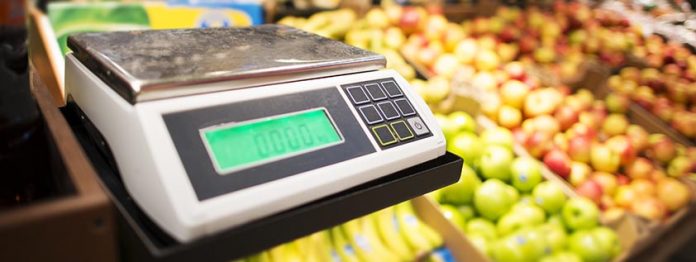You may not give it much thought, but the food and beverage industry plays a big role in our lives. From the coffee we drink in the morning to the beer we enjoy at night, this industry provides us with countless products that we enjoy daily. But what exactly is the food and beverage industry? Here’s a quick overview:
In this Article:
What is food and beverage in the hospitality industry?
Food and beverage is one of the most important aspects of the hospitality industry. It is what keeps customers coming back to your establishment. There are many types of food and beverage that you can offer in your business. You can serve traditional meals, such as breakfast, lunch, and dinner. Or, you could offer speciality items that are unique to your business. Whatever you choose, make sure that you offer something that appeals to your customers.
How important is the food and beverage industry?
The food and beverage industry encompasses everything from farms and fisheries to manufacturing, retail, and catering companies. In other words, it covers all businesses that are involved in producing or selling food or drinks. This includes crops grown for human consumption, livestock raised for meat or dairy products, seafood caught from rivers and oceans, as well as processed foods such as snacks and packaged goods.
As you can imagine, the food and beverage industry is huge! It employs millions of people around the world and generates billions of dollars in revenue each year. So next time you sit down to enjoy a delicious meal or refreshing drink, take a moment to think about all the hard work that went into making it possible. From farm to table (or glass), there’s a lot more to our favorite eats and drinks than meets the eye!
Benefits of the food and beverage industry
While the industry has come under scrutiny in recent years for its environmental and social impact, there are also many positive aspects to consider. Here are some of the key benefits of the food and beverage industry:
It is a major employer.
The food and beverage industry is a major employer, with over 15 million people employed in the United States alone. The industry provides jobs for a wide range of workers, from farmers and food scientists to chefs and restaurant managers.
The food and beverage industry is a major contributor to the economy.
The food and beverage industry plays an essential role in our economy, employing millions of individuals and generating billions in revenue each year. From farmers to food processors, restaurant owners to food truck operators, the industry provides countless jobs and opportunities for economic growth.
The food and beverage industry is a major source of tax revenue.
The food and beverage industry is one of the largest contributors to tax revenue worldwide. Virtually everybody eats food, meaning that a wide range of businesses–from small corner stores to massive grocery store chains–pay taxes on the food they sell. This revenue helps support essential government programs and services at all levels, from education to infrastructure.
The food and beverage industry provides essential products and services.
The food and drinks industry provides essential products and services that are necessary for human survival. The industry produces items such as food, water, and shelter that are essential for human life.
The food and beverage industry is a major source of innovation.
The food and beverage industry is a major source of innovation, with new products and technologies being developed all the time. The industry has been responsible for innovations such as refrigeration, canning, and freezing, which have had a profound impact on the way we live.
What are the types of the food industry?
The food industry encompasses a wide range of companies and organizations, all involved in the production, distribution, and sale of food and beverages. This includes food manufacturers, food retailers, grocers, restaurants, and caterers. These companies often work closely with farmers and food suppliers to source ingredients for their products.
Agricultural industry
This type of food industry deals with the production of food products from agricultural raw materials. The main products of this industry are crops and livestock.
Food processing industry
This type of food industry deals with the conversion of agricultural products into processed foods. The main products of this industry are canned foods, frozen foods, and ready-to-eat meals.
Food manufacturing industry
This industry produces food and beverage products for sale to retailers and other commercial customers.
Food retailing industry
This type of food industry deals with the sale of food products to consumers. The main products of this industry are grocery stores and supermarkets.
Global Opportunities in the food and beverage business
There are many opportunities for businesses to enter this market and grow their profits. The industry is a massive market, with opportunities for businesses of all sizes. If you’re looking to get into the food and beverage business, here are a few tips to help you get started.
- Decide what type of business you want to start. There are many options in the food and beverage industry, from restaurants and cafes to food manufacturing and distribution.
- Once you’ve decided on a business model, do your research. Learn as much as you can about the industry, your target market, and your competition. This will help you make informed decisions about your business strategy.
- Set up a business plan: This will be your roadmap for success, so include all the important details about your business.
- Find the right location: If you’re starting a restaurant or food-related business, it’s important to choose a location that will attract customers. Consider foot traffic, parking, and public transportation when choosing a site for your business.
- Choose the right suppliers: When you’re in the food and beverage business, it’s important to choose suppliers you can trust. Do your research and find suppliers that will provide you with high-quality ingredients.
- Create a marketing plan: Marketing is essential for any business, but it’s increasingly important in the food and beverage industry. You’ll need to create a plan that will help you reach your target market and promote your products or services.
Marketing strategies used in the food and beverage industry
There are many marketing strategies that can be used in this industry. Some of the few examples include:
- Product placement: Getting your products placed in high-traffic areas, such as grocery store shelves or restaurant menus, can help increase exposure and sales.
- Promotions: Offering discounts or running promotions is a great way to attract attention and boost sales.
- Social media: Utilizing social media platforms, such as Facebook, Twitter, and Instagram, is a great way to reach a larger audience and build brand awareness.
- Events: Hosting or sponsoring events, such as food festivals or cooking demonstrations, can help generate interest in your products or brand.
- Word of mouth: Creating a buzz around your products or brand through word-of-mouth marketing can be extremely effective. Try offering samples or giveaways to encourage people to try your products and spread the word.
- Paid Search: Investing in paid search ads, such as Google AdWords, can help you reach a wider audience and generate leads.
- Email marketing: Sending informative emails to your target market can help build relationships and drive sales.
- Content marketing: Creating content, such as blog posts, infographics, or videos, that applies to your target market can help attract attention and build your brand.
Challenges faced by food and beverage companies
As food and drink companies continue to expand globally, they face several challenges and hurdles in order to maintain profitability and success. These challenges can range from managing supply chains, navigating different food regulations and laws in each country, dealing with food safety concerns, and combating food waste.
Managing supply chains
One of the biggest challenges is managing supply chains. This is because these companies often source their ingredients and raw materials from all over the world. As a result, they must deal with a complex network of suppliers, manufacturers, and distributors.
Food safety concerns
Another challenge is dealing with food safety concerns. This is because food safety is a major concern for food consumers. As a result, food and beverage companies must have rigorous food safety protocols in place in order to ensure that their products are safe for consumption.
Combating food waste
This is a huge challenge in the food sector. As a result, food and beverage companies must work to reduce food waste in their operations.
Increasing costs
Increasing costs include the cost of raw materials, labor, and transportation. As a result, these companies must increase efficiency and reduce waste in order to maintain profitability. In addition, many companies are facing higher transportation costs as fuel prices have increased.
Changing consumer preferences
This includes the trend towards healthy eating and the rise of plant-based diets. Consumers are becoming more health-conscious and are demanding products that are free from artificial ingredients, preservatives, and GMOs. They are also seeking products that are sustainably sourced and produced.
Intense competition
With many companies vying for market share, many companies are resorting to price wars in order to gain an edge over their competitors. This intensifies pressure on margins and can make it difficult for companies to differentiate their products.
Regulatory Pressure
Regulatory pressure from government agencies, such as the Food Drug Administration (FDA) and the Food and Drink Federation. These agencies regulate the food industry and set standards that companies must meet in order to sell their products. They implement strict regulatory requirements on labeling and advertising, as well as on the manufacturing process. This has made it more difficult for companies to operate and has increased costs.
Shifting weather patterns
Shifting weather patterns, such as droughts, floods, and heat waves, can impact crops and disrupt supply chains. This can lead to shortages of certain food ingredients and higher prices.
Economic recessions
Economic recessions can also impact the food and beverage industry. During these times, consumers may cut back on spending, which can lead to lower sales for companies. In addition, economic downturns can impact the availability of financing, which can make it difficult for companies to invest in new products or expand their operations.
Seasonality
Demand for certain products can vary depending on the time of year, making it difficult to forecast sales and manage inventory levels. For example, demand for pumpkin-flavored products peaks in the fall, while demand for eggnog and other holiday-themed items increases during the winter.
Food and beverage trends
The food and beverage industry is constantly changing and evolving. Manufacturers are always looking for the next big thing to capture the attention of consumers. Here are some of the latest trends in the food and beverage industry.
Plant-based foods
Plant-based foods are becoming increasingly popular as more people look to reduce their meat consumption for health and environmental reasons. A plant-based diet has been shown to provide many health benefits, including reducing the risk of heart disease, obesity, and type 2 diabetes. There are a variety of plant-based foods available, including tofu, tempeh, seitan, lentils, beans, and quinoa.
Sustainability
The food and beverage industry is increasingly focused on sustainability, as consumers are becoming more aware of the environmental impact of their food choices. As a result, many companies are investing in sustainable initiatives, such as reducing food waste, using recycled packaging, and supporting local farmers.
Convenience
Convenience is also a major trend in the food and beverage industry, as consumers are looking for packaged food and products that fit their busy lifestyles. Many companies are investing in convenient packaging, such as single-serve containers and on-the-go snacks.
Health and wellness
One trend that has been gaining momentum is the shift towards healthier, natural food options. Consumers are realizing food ingredients and food sources, leading to a demand for organic products and transparent labeling. In response, many food companies are reformulating their products to be made with fewer artificial ingredients and more whole, natural foods.
Healthy snack options
Another trend that has been gaining popularity is the demand for healthier snack options. As consumers become more health-conscious, they are looking for snacks that are low in sugar, calories, and unhealthy ingredients. In response, many food companies are offering healthier alternatives to traditional snacks, such as baked chips and fruit snacks.
Food delivery services
Another major trend is the rise of food delivery services and online grocery shopping. These services allow consumers to order food from their favorite restaurants and have it delivered to their doorstep. This convenience has made food delivery services a popular option for busy consumers.
Meal kits
Meal kits are another convenient option that has become popular in recent years. These kits contain all the ingredients needed to make a complete meal, which can be a convenient option for busy consumers.
Clean label
The clean label trend is also becoming more prevalent in the industry, as consumers are looking for products with simple, easy-to-understand ingredient lists. In response, many companies are removing artificial ingredients and unnecessary additives from their products.
Functional foods
Functional foods are another trend that is growing in popularity, as consumers are looking for foods that offer health benefits beyond basic nutrition. This can include foods that are high in protein, fiber, or omega-3 fatty acids.
Food and drink industry Growth Strategy
The food and beverage industry is one of the most dynamic and fastest-growing industries in the world. In order to achieve growth in this industry, they must develop a clear and concise growth strategy. The following are three essential steps for achieving growth in the food and beverage industry:
Product Innovation
In order to stay competitive, companies in the food and beverage industry must continuously develop new products. This can include introducing new flavors or variations in existing products. It is also important to identify new trends in the industry and develop products that tap into these trends.
Expansion into new markets
Another key to growth is expanding into new markets, both domestically and internationally. This can involve opening new stores or distribution channels in foreign countries or targeting new customer segments with specific products or marketing campaigns.
Improved efficiency
In order to be successful, companies in the food and beverage industry must operate efficiently and keep costs low. This can involve streamlining production processes, reducing waste, and finding cost-effective ways to distribute products.




